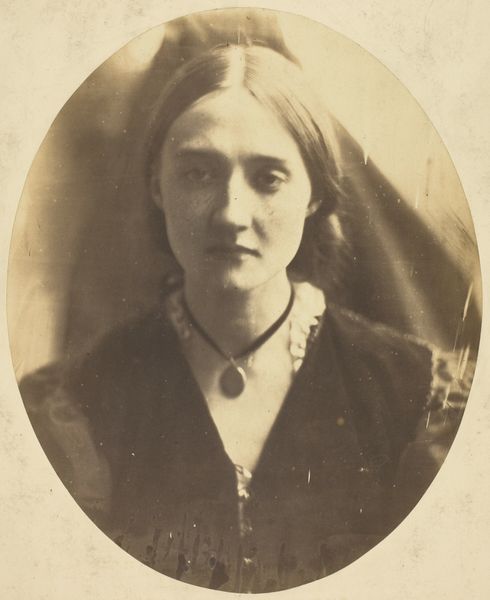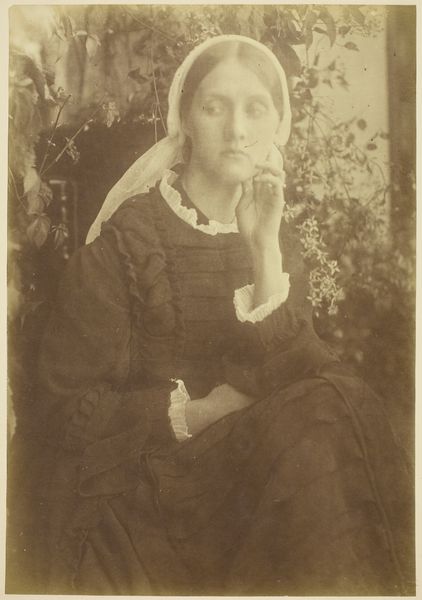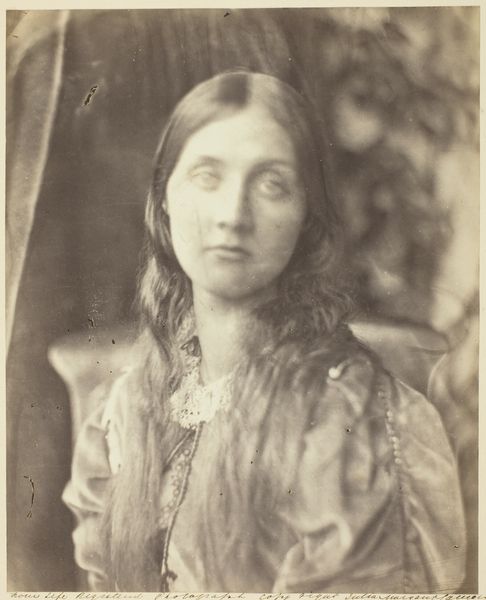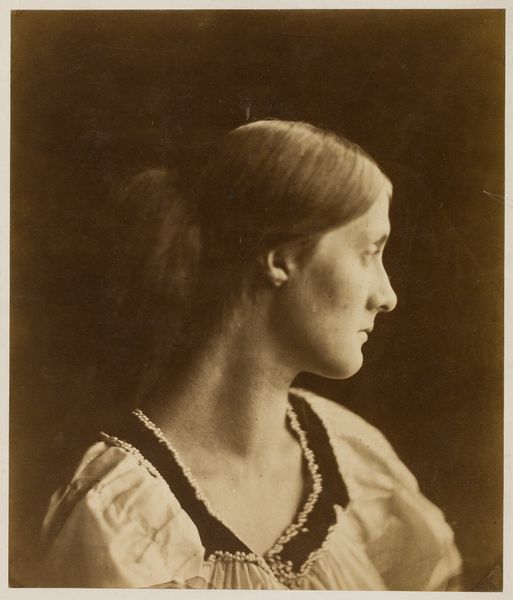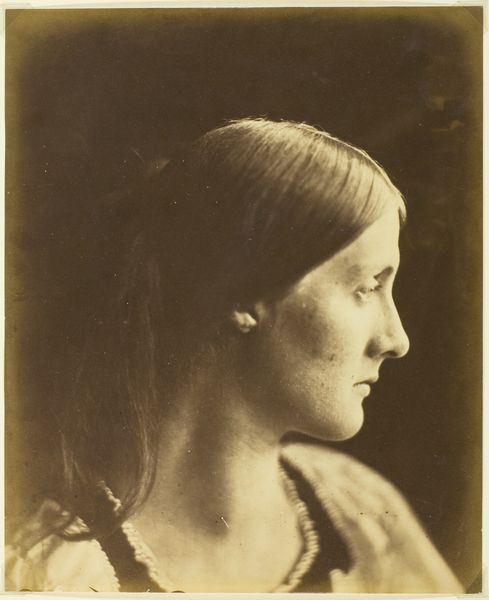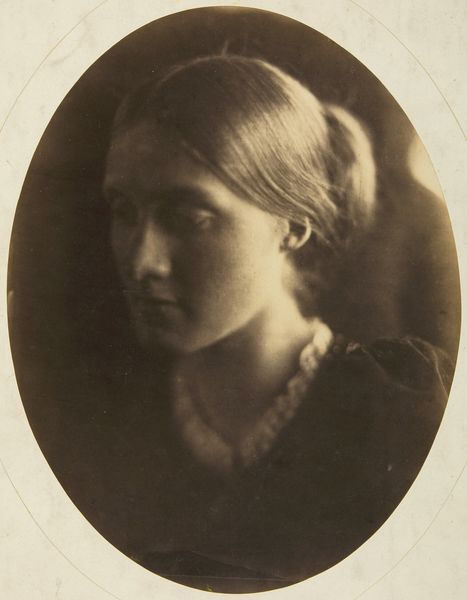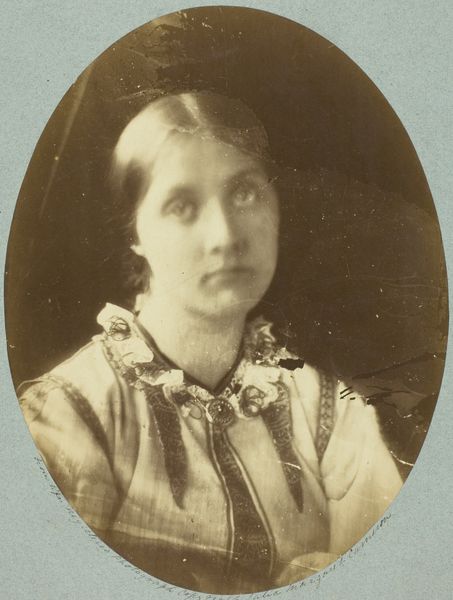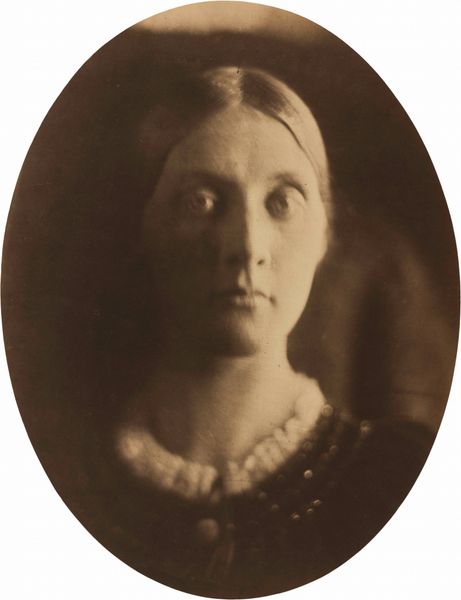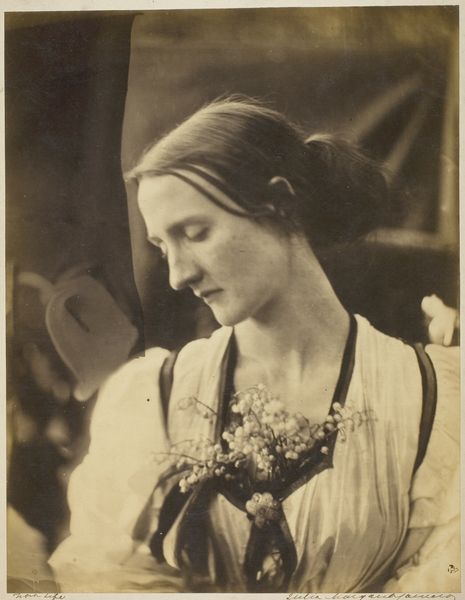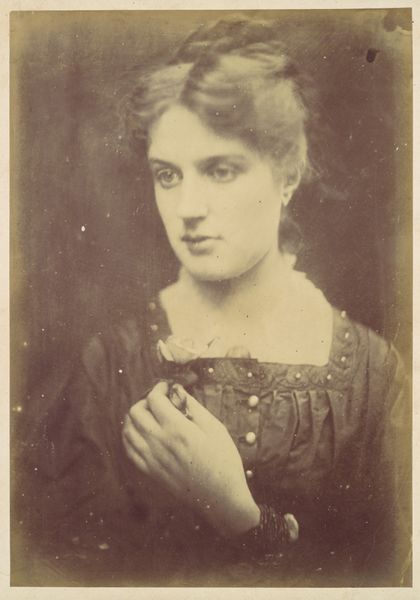
Mrs. Herbert Duckworth, ("A Beautiful Vision") 1872
0:00
0:00
Dimensions: 34.0 × 26.8 cm (13 3/8 × 10 5/8 in.)(rectangular photograph in oval mat)
Copyright: Public Domain
Editor: So, this is Julia Margaret Cameron’s "Mrs. Herbert Duckworth, (“A Beautiful Vision”)” from 1872, a gelatin silver print. It's arresting—that soft focus almost ethereal. What is your interpretation of this portrait? Curator: Consider the title itself—"A Beautiful Vision." Cameron’s lens attempts to capture not just a likeness, but an idealized essence. Note the flowers juxtaposed with Mrs. Duckworth. Flowers in Victorian iconography often represented fragility and ephemeral beauty, acting as visual metaphors for idealized womanhood. What feelings does this invoke for you? Editor: It's interesting. The flowers frame her face, but she's not smiling; she's gazing right through you. It is a striking gaze—is there an intended message? Curator: The gaze is key. In many cultures, the eyes are the windows to the soul. Here, Cameron seems to be presenting Mrs. Duckworth's soul as something almost otherworldly. Is she presenting a sitter, or an icon, and for what purpose? Editor: An icon. That makes a lot of sense, especially thinking about the history of portraiture and how it can elevate a person. It’s fascinating how the out-of-focus style adds to this feeling. It's less about the physical likeness, more about the soul. Curator: Precisely. This "pictorialist" approach wasn’t just about aesthetics, but about asserting photography as a high art form capable of conveying emotion and deeper truths. She’s tapping into a collective desire to capture beauty but, also, imbue it with meaning, almost religious reverence. Editor: I see that now, definitely changes my perspective on the whole piece. Thanks. Curator: My pleasure. I now realize the way we continue to read portraits through symbolic frames shifts constantly across different times.
Comments
No comments
Be the first to comment and join the conversation on the ultimate creative platform.


